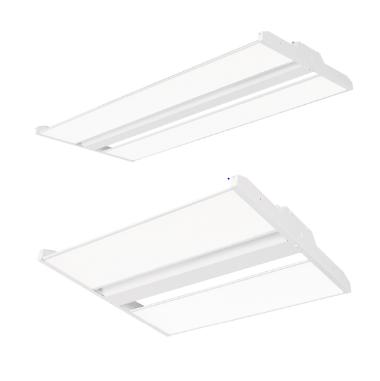
In today’s fast-paced industrial world, it might be difficult to take a minute to assess the status of your facilities. Inadequate illumination can harm an industrial plant, resulting in delayed warehouse picking times or missed quality inspections in a production cell. When there is insufficient illumination, potential safety dangers are at the top of the list of worries.
Your lighting system should never cause an on-the-job accident. While many facility managers know that their lighting needs to be improved or upgraded, it can be hard to know where to begin. To assist you in making a choice, below are highlighted the benefits of switching to industrial light fixtures.
Maintenance Costs And Time Savings
Many facility managers may wait to install a few high bay lights to fail to save money on maintenance, but in the meanwhile, your production floor may get darker. Instead of jeopardizing your employees’ safety and effectiveness to save money on maintenance, convert to LED high bay lighting and drastically reduce the frequency with which your lights need to be replaced. For example, by switching conventional 400-watt HID high bay lighting to LED, a typical building with industrial LED light fixtures may save up to $5,341 in maintenance expenses over three years.
Savings On Energy
LED high bay lights (the most prevalent in an industrial/factory application) can have wattages ranging from 95 to 495. Compared to the standard HID high bay light, this wattage ranges from 175 to 1000 watts. The potential energy saving from switching to LED lighting in your building should make a retrofit a top priority.
By converting to LED high bay lighting, you may reduce energy use by 40%-60%. In other words, you would save $300 per fixture each year in power bills. This might significantly impact the operational balance sheet, depending on the size of your institution.
Increase Productivity
Industrial LED illumination can increase assembly accuracy while potentially speeding up assembly procedures. This is because of the clever lensing mechanism used in LED lighting, which ensures that the light is always focused exactly where it needs to be and is not wasted looking towards the ceiling or spreading too thinly across your surfaces. An update to LED lighting may enhance general eyesight and alertness, eliminate shadows and improve color recognition throughout the assembly process, resulting in higher efficiency and productivity.
The more abstract savings, the savings that are more difficult to measure, are sometimes overlooked, despite their importance. Consider how much profit might be gained if enhanced facility and workplace illumination resulted in a 1% increase in productivity. What about a 5% decrease in safety incidents? What does this entail for your insurance premiums and workers’ compensation claims? What does a 3% increase in overall product quality mean for the cost of faulty items and customer quality claims? LED illumination may increase the rate during manufacturing and in quality control and inspection stations.
First And Foremost, Safety.
Improving your facility’s lighting also enhances its security. Accidents can occur if an employee cannot notice a hazard. Collisions in the workplace can be avoided by installing adequate factory illumination to illuminate oncoming pedestrians or material handling equipment.
In addition to general facility lighting, particular workstation illumination should be considered for safety and productivity reasons. Workstation illumination can help decrease machine/employee accidents by making dangers more visible.
LED lighting casts a little shadow and lasts significantly longer than traditional HID lighting. Thus, even if older lighting is still operational, it is most likely producing substantially less light than originally required, which can increase workplace accidents and safety.


